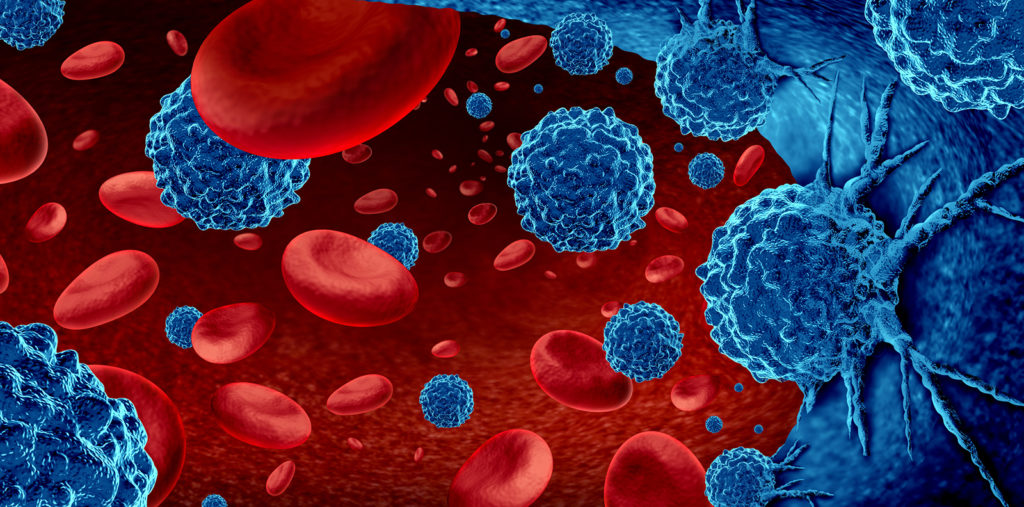
Recently Diagnosed or Relapsed? Stop Looking For a Miracle Cure, and Use Evidence-Based Therapies To Enhance Your Treatment and Prolong Your Remission
Multiple Myeloma an incurable disease, but I have spent the last 25 years in remission using a blend of conventional oncology and evidence-based nutrition, supplementation, and lifestyle therapies from peer-reviewed studies that your oncologist probably hasn't told you about.
Click the orange button to the right to learn more about what you can start doing today.
- You are here:
- Home »
- Blog »
- Multiple Myeloma »
- Minimal Residual Disease – Multiple Myeloma
Minimal Residual Disease – Multiple Myeloma

“Clinical evidence shows that the status of minimal residual disease (MRD) after treatment is an independent prognostic factor of MM. MRD indicates the depth of post-therapeutic remission.”
Achieving minimal residual disease status after treatment is a noteworthy achievement in the life of a newly diagnosed myeloma patient. Numerous studies indicate that achieving MRD status means your prognosis, on average, is good. But responding well to treatment is only one small part of the story.
There are challenges yet to come however.
Challenge #1- Toxicity matters-
Myeloma Patient A reaches MRD status after only a few rounds of induction therapy. Myeloma Patient B reaches MRD after aggressive induction therapies followed by an aggressive high-dose autologous stem cell transplant followed by low-dose maintenance therapy.
According to the study linked below, both patients A and B achieved MRD status “after treatment.” Common sense says that the Myeloma Patient A who underwent only a couple of rounds of RVd, underwent much less toxicity than Myeloma Patient B and therefore will weather the remissions and relapses yet to come.
Challenge #2- MRD cells that remain are resistant tumor cells–
Challenge #2 is an extension of challenge #1 that focuses less on the patient’s immune system (health) and more on the monoclonal proteins IN the patient. In short, Multiple Myeloma is a complex, incurable cancer. According to research, the monoclonal proteins that remain after the patient undergoes therapy are resistant to that chemo cocktail.
Multi-drug resistance is what eventually kills all myeloma survivors.
Challenge #3- Not achieving MRD doesn’t mean that the patient won’t have a long overall survival
This challenge can be difficult to wrap your brain around- at least at first. I think Dr. Rajkumar says it best so I will simply quote his comments from the second essay linked below: “There are countless patients with myeloma who have a persistent monoclonal (M) protein after initial therapy who live for years without progression and without needing additional therapy…”
So yes, minimal residual disease (MRD) is an important prognostic factor. But there are other ways to skin the mm cat.
Read these posts written about MRD and myeloma to learn more-
- Minimal Residual Disease (MRD) in Multiple Myeloma
- Myeloma – Minimal Residual Disease = Longer OS?
- Gut Health Leads Multiple Myeloma to MRD
- Minimal Residual Disease (MRD) Testing for Multiple Myeloma – Does It Matter?
- Myeloma – Minimal Residual Disease, Complete Remission Do You Care?
- Oh No! I’m MRD Positive not Negative – What do I do?
Click now to learn more about your prognosis
David Emerson
- MM Survivor
- MM Cancer Coach
- Director PeopleBeatingCancer
Minimal residual disease in multiple myeloma: current status
“Multiple myeloma (MM) is a treatable plasma cell cancer with no cure. Clinical evidence shows that the status of minimal residual disease (MRD) after treatment is an independent prognostic factor of MM. MRD indicates the depth of post-therapeutic remission.
MRD studies strongly indicate that MRD is not a uniform declination of whole MM tumor population. Rather, MM MRD exhibits unique signatures of cytogenetic aberration and gene expression profiles, unlike those of MM cells before therapy.
Diagnostic high-risk MM and low-risk MM exhibited a diversity of MRD features. Clonal evaluation may occur at the MRD stage in MM. The dynamics from the diagnostic MM to MRD correlate with the disease prognosis.
To summarize, the MRD stage of disease represents a critical step in MM pathogenesis and progression. Demonstration of MM MRD biology should help us to deal with the curative difficulties…
Conclusions-
MRD represents a critical stage in MM treatment, during which the patient has a minimal number of resistant tumor cells. Both MRD status and the dynamics of diagnosis-to-MRD transition have a prognostic value for MM.
A significant amount of gene expressions and signaling pathways are altered within the tumor cells from diagnosis to MRD.
Each individual may yield discrepant dynamic patterns of diagnosis-to-MRD transition.
Clone evolution may occur at the MRD stage in MM and is associated with inferior long-term outcomes. Diagnostic risk stratification affects the MRD stage of disease; high-risk and standard-risk MM-derived MRDs may exert a wide variety of gene expression profiles.
Many questions about MRD remain unanswered. More exploratory experiments will help a lot to demonstrate MM MRD.”
Should Myeloma Patients Panic If They Do Not Achieve A Complete Response?
“Multiple myeloma is a remarkably heterogeneous disease; the outcomes vary dramatically depending on the patient’s chromosomal abnormalities. The type of myeloma one patient has may be completely different than the myeloma another patient has; it may not even be the same disease.
I am sure patients participating in support groups have seen and pondered about the marked differences in how fellow patients seem to respond to the exact same therapy.
Thus, the first point I would like to make is that myeloma is way too complex to have one set of rules. In some patients, a complete response is critical for long-term survival; while in many, lack of a complete response has no impact whatsoever on long-term outcome. There are countless patients with myeloma who have a persistent monoclonal (M) protein after initial therapy who live for years without progression and without needing additional therapy…”

